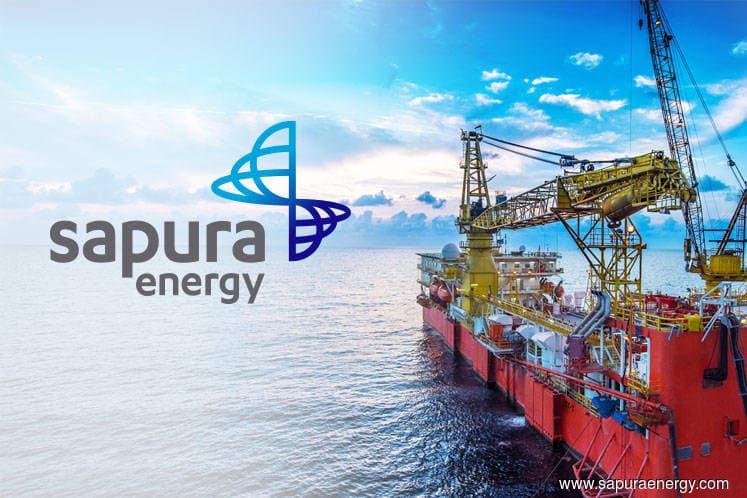
This article first appeared in The Edge Malaysia Weekly on November 13, 2017 - November 19, 2017
NEWS of Tan Sri Mokhzani Mahathir offering to sell 605 million shares or a 10.1% stake in Sapura Energy Bhd on Nov 2, while not considered a surprise to some, has, nevertheless, affected investor sentiment towards the oil and gas group.
However, analysts opine that this will be mitigated in the short term. “Without his (Mokhzani’s) disposal, fundamentally, the share price should be higher,” says AmInvestment analyst Alex Goh.
MIDF Research analyst Aaron Tan concurs. Mokhzani’s share sale at a discount is a “normal business decision”, he says. “The disposal seems natural. He had not held a top position in the company since 2015.”
The day the news broke, Sapura Energy was among the top losers and the most traded counters. Its share price fell 17 sen or 10.5% to its intra-day low of RM1.45 on Nov 2 — its biggest one-day loss since August 2015 — but later recovered to RM1.49, down 8.02%, with 79.85 million shares traded.
Mokhzani had offered to sell the shares, held by his British Virgin Island-registered company, Khasera Baru Ltd, at between RM1.42 and RM1.49 apiece. CIMB was appointed the sole book runner for the deal, Reuters reported.
Last Tuesday, Mokhzani ceased to be a substantial shareholder in Sapura Energy after Khasera Baru sold 384.97 million shares for RM577.46 million or RM1.42 apiece, which was below its closing price of RM1.50. After the sale, Khasera Baru is left with 220.03 million shares or a 3.67% stake.
Mokhzani still holds 0.16% equity interest in the company. Another of his private vehicle, Kencana Capital Sdn Bhd, holds 0.08%.
Sapura Energy has continued trending downwards since, closing one sen or 0.69% lower at RM1.45 last Friday.
Khasera Baru obtained the shares from Khasera Baru Sdn Bhd — also owned by Mokhzani — back in July 2015 through a share transfer, Bursa Malaysia filing shows.
The latest share disposal by Khasera Baru could be at a loss for Mokhzani. This is the second time he is selling a substantial stake in Sapura Energy, formerly known as SapuraKencana Petroleum Bhd.
Sapura Energy shares held by Mokhzani and Khasera Baru were first made available to them during the merger exercise between Kencana Petroleum Bhd and SapuraCrest Petroleum Bhd, in which they were shareholders.
The merger was done through special purpose vehicle Integral Key Sdn Bhd in May 2012, with the owners of both companies receiving cash payments and shares in the merged entity.
Kencana Petroleum was offered RM5.98 billion or RM3 per share — via RM969 million cash and 2.51 billion shares in SapuraKencana Petroleum at an indicative price of RM2 apiece. The deal valued Khasera Baru’s 31.81% stake in the company at around RM1.9 billion.
Minus the cash portion, Khasera Baru received 795.32 million shares or a 13.27% stake in the merged entity, valued at RM1.59 billion. Mokhzani got 9.49 million shares or a 0.16% stake.
On Feb 18, 2014, Khasera Baru sold 190.3 million SapuraKencana shares at RM4.30 apiece or RM820 million in total. Khasera Baru netted a profit of RM439 million in that deal. The timing then was good — crude prices crashed seven months later that year.
Since then, shares of Sapura Energy have slumped amid the global oil glut. The stock has yet to recover.
The latest share disposal by Mokhzani did raise some eyebrows, considering Sapura Energy’s share price is currently hovering at its five-year low.
Furthermore, Mokhzani’s exit came at a time when the price of Brent crude oil is recovering. Brent crude breached the US$60-per-barrel mark in end-October and was trading above US$63 per barrel last Friday.
On that note, AmInvestment Bank’s Goh opines that Sapura Energy’s prospects, too, will be brighter, after a worse-than-expected performance in the first half of its financial year ending Jan 31, 2018 (FY2018).
Earnings recovery is likely to come from Sapura Energy’s exploration and production segment, he says. The group’s website shows that it has four blocks of production assets off Kerteh, Terengganu, and five exploration assets in Sabah and Sarawak.
“Considering the assets it acquired from Newfield previously and other production sharing contracts with Petronas, the company can definitely benefit from higher realised prices per barrel.
“On top of that, higher oil prices should boost investor confidence, especially when talking to banks for future financing,” says Goh, who places a fair value of RM1.54 on the counter.
MIDF’s Tan concurs, but points out that Sapura Energy’s drilling segment will continue to go through a gestation period before its clients are sufficiently convinced of market prospects to give out more contracts.
“The drilling segment is still making losses as its tender rigs are not fully utilised. They are maintaining their vessel count,” he says.
Sapura Energy has guided analysts that it will see only five rigs utilised by end-FY2018, from six in September. Just last month, it bought over a heavy-lift and pipelay vessel, Sapura 3000, after discontinuing its joint venture with London-based Subsea 7 SA.
Tan also expects Sapura Energy’s engineering and construction segment to see weaker yard utilisation rate in the coming quarters with the completion of some major projects in 3QFY2018. He has a “neutral” call on the stock, with a target price of RM1.69.
Bloomberg data shows that analyst coverage is broadly mixed on the counter, with three “sell”, five “hold” and four “buy” calls. There is also one “outperfrom” call. The target price ranges from RM1.30 to RM2.15.
Save by subscribing to us for your print and/or digital copy.
P/S: The Edge is also available on Apple's AppStore and Androids' Google Play.